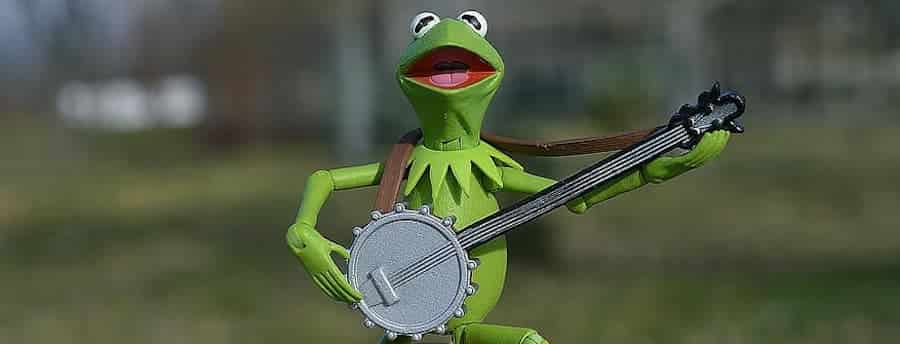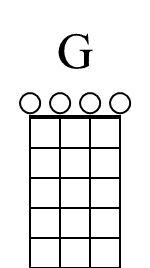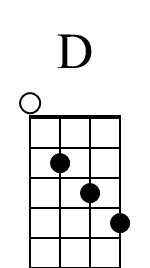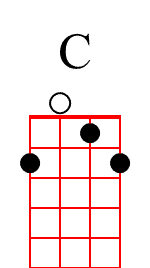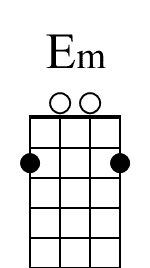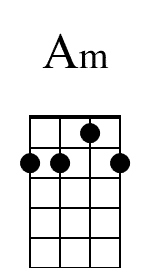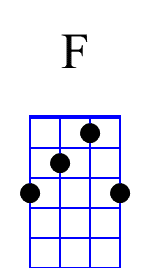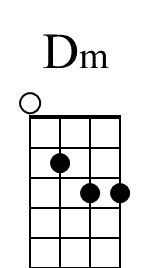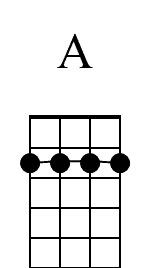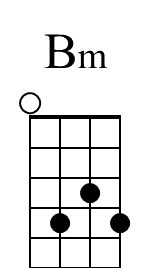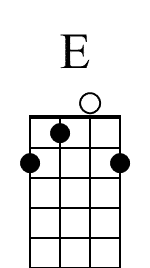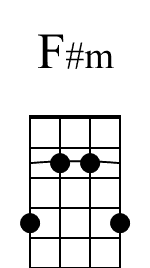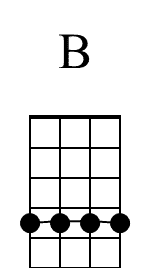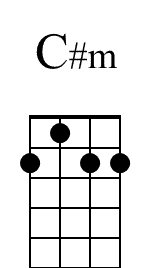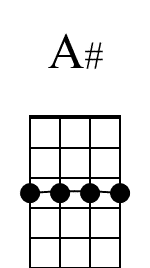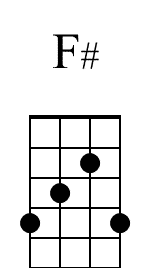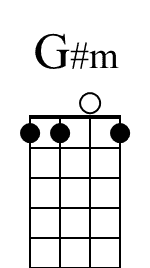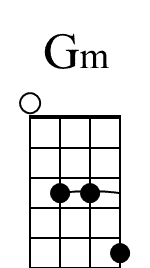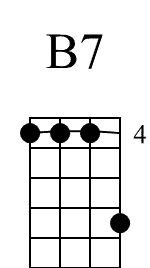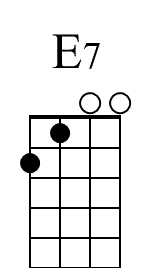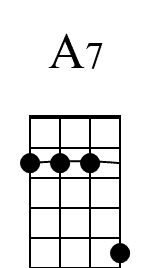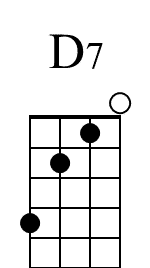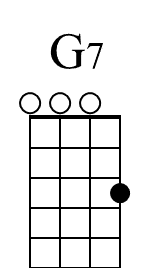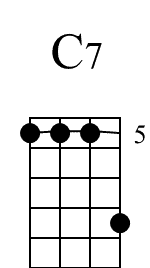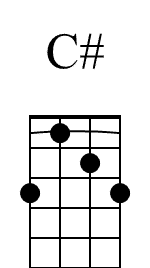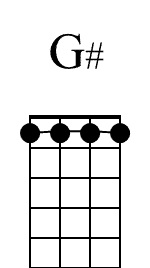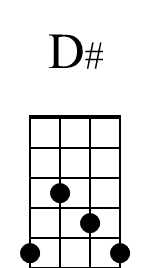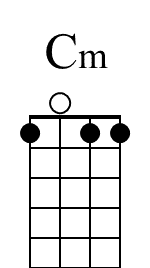27 "Clickable" Banjo Chords for Beginners
Below are 27 essential banjo chords for beginners. If you already know a few of these chords, plug them into this Search Engine. You'll find tons of easy songs. But if you don't know any banjo chords yet - start with the sequence below. Every diagram is clickable (with songs).
For example:
- Click the 3rd diagram (in red) to see 3-chord songs with G, D, C.
- Click the 6th diagram (in blue) for tunes that use the first 6 chords.
The songs you'll see are mostly from guitar/ukulele sites. And there are duplicate tunes between instruments.
1-Chord Songs with G Major
Click any song below to play along with the video.
- Bo Diddley - Bo Diddley - 1955
- My Jack Don't Drink No Water - Shortstuff Macon - 1964
- Dance to the Music - Sly & the Family Stone - 1968
- Everyday People - Sly & the Family Stone - 1969 - (Slightly out of tune.)
- It's a Rainy Day Sunshine Girl - Faust - 1972
- Low Rider - War - 1975
- Bad to The Bone - George Thorogood - 1982
- One Chord Song - Keith Urban - 2000
- U.S. 41 - Tom Petty & the Heartbreakers - 2010
- Pretty Polly - Traditional - NA
- Row, Row, Row Your Boat - Traditional - NA
- The Farmer in the Dell - Traditional - NA
- Make New Friends - Traditional - NA
- Frère Jacques - Traditional - NA
To see chord diagrams for guitar, ukulele, mandolin, or banjo, click here.
1
2-Chord Songs with D & G
Click any title to see the chords and notation.
Click any artist for a video.
- Take Me Back To Tulsa - Bob Wills - 1940
- How Much Is That Doggie in the Window - Patti Page - 1952 - This song modulates.
- Hot Corn, Cold Corn - Flatt and Scruggs - 1962
- Lively Up Yourself - Bob Marley - 1971
- Feel Like Making Love - Bad Company - 1975 - Not sure if this counts or not. There's an extra C in the notation.
- Waymore Blues - Waylon Jennings - 1975
- Copperhead Road - Steve Earle - 1988 - The G5 in the notation is optional.
- Snowstorm - Galaxie 500 - 1989
- The Cowboy Song - Joe vs. the Volcano - 1990
- Sweet Potato - Cracker - 1993
- Stop Whispering - Radiohead - 1993
- Three Is a Magic Number - Blind Melon - 1996
- What I Got - Sublime - 1996
- Gimme That Girl - Joe Nichols - 2009
- Best Day of My Life - American Authors - 2013 - The notation includes a Bm, but this song still works with D & G.
- Blurred Lines - Robin Thicke - 2013
There are also lots of folk tunes & nursery rhymes with these 2 chords.
To see chord diagrams for guitar, ukulele, mandolin, or banjo, click here.
2
3
4
5
6
7
8
9
10
11
12
13
14
15
16
17
18
19
20
21
22
23
24
25
26
27
Why Start with These 27 Beginner Banjo Chords?
The Chord Genome Project is a collection of 750K+ songs from some of the largest music sites only (mostly guitar and ukulele). Learning all these songs requires mastering several thousand banjo chords - including obscure ones like Am6add9 or C#sus2.
But…
To play roughly half this music (i.e. 375,000+ tunes), you only need the 27 banjo chords above. And learning these beginner chords in the exact order shown maximizes the number of songs you can play at every stage.
For example, G + D + C gives you the most music of any 3-chord combination. And adding Em gives you an unbeatable collection of 4-chord songs to choose from.
Need Help Playing These Banjo Chords?
I play the guitar and ukulele - but not the banjo (yet). However, I remember the frustration I used to feel when trying to learn basic concepts (like beginner chords). If you're also having trouble, here are some resources that might help.
It also helps to understand what “enharmonics” are and how they work. Just as “tonight,” “tonite,” “2night,” and “2nite” are different ways of writing the same word – A# and Bb are different ways of writing the same banjo chord sound and fingering. For consistency, the diagrams above are listed as natural or sharp (with no flat chords). To learn more, check out guide to enharmonics.
Finally, there are many different ways to play the same banjo chord. And the diagrams above are merely suggestions. If you prefer using different chord fingerings, knock yourself out. This comprehensive resource is a great place to start.
Do You Have to Start with the G Major Chord?
G major is the only banjo chord that doesn't use any fingers. And with it, you can play a surprising number of 1-chord songs. But you don't have to start with G major. For a list of other potential "starting" places, be sure to check out the dictionaries of:
If you'd like to see banjo diagrams that aren't in the chart above - check out the free resources below:
- Major Banjo Chords (e.g. G)
- Minor Banjo Chords (e.g. Gm)
- Dominant 7th Banjo Chords (e.g. G7)
- Minor 7th Banjo Chords (e.g. Gm7)
No matter which chord(s) you start with, you can create your own path. Use this site's free Search by Chord tool to quickly find easy songs using any combination of chords you want. And then use the Next Best Chord tool to see what new chord to add to your practice.
Thanks for Reading
If you found this resource helpful, spread the love and share it with other aspiring banjo players.
Thanks for reading. And happy strumming.

